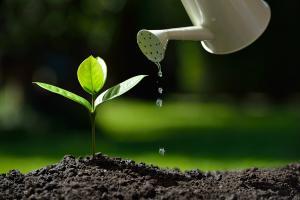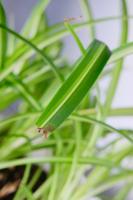How can Plants Prevent Water Loss Worksheet 32
Water is an essential element for plant growth and development. Plants require constant access to water to maintain their health and survival. However, water is a limited resource, and plants need to find ways to reduce water loss and maximize their water use efficiency. In this article, we shall explore various mechanisms used by plants to prevent water loss and ensure adequate supply.
Transpiration and water loss
Transpiration is the process by which plants lose water through openings on the surface of their leaves, called stomata. Stomata play a critical role in the regulation of water loss and the uptake of carbon dioxide for photosynthesis. However, when the atmospheric conditions are hot and dry, plants can lose excessive amounts of water through transpiration, leading to wilting and plant stress.
Root adaptations to prevent water loss
Roots are an important organ for water uptake in plants. For plants growing in a dry environment, roots can adapt by penetrating deep into the soil to access water sources. In addition, some plants can develop extensive root systems that spread widely throughout the soil, allowing them to capture as much water as possible.
Another adaptation used by some plants is the development of root hairs. These are thin, elongated structures that increase the surface area of the root system, facilitating the uptake of water and other nutrients. The higher the surface area, the more efficient the roots are at absorbing water.
Leaf adaptations to prevent water loss
Leaves are the primary site for photosynthesis in plants. However, they can also be a significant source of water loss through transpiration. To minimize water loss, plants can develop various adaptations to the structure and function of their leaves.
One crucial adaptation is the presence of a waxy cuticle on the surface of the leaves. This cuticle acts as a barrier to water loss and protects the leaves from damage caused by environmental stresses such as heat and drought.
Another adaptation is the development of small leaves or spines. Plants that grow in arid environments, such as cacti, often have small or spiky leaves that reduce the surface area exposed to sunlight and prevent water loss through transpiration.
Stomata control
Stomata on leaves are essential for regulating gas exchange and water loss. However, when the atmospheric conditions are hot and dry, these stomata can open too wide, leading to excessive water loss through transpiration.
To prevent water loss, plants can control the opening and closing of their stomata in response to environmental cues. For example, plants can close their stomata during the hottest part of the day, limiting water loss and preventing wilting.
Conclusion
Plants can use various mechanisms to prevent water loss, including root adaptations, leaf adaptations, and stomata control. These adaptations help plants to conserve water, maximize their water use efficiency, and survive in arid and drought-prone environments. A better understanding of these mechanisms can help improve our agricultural practices and conserve our water resources.

 how many times do yo...
how many times do yo... how many planted tre...
how many planted tre... how many pine trees ...
how many pine trees ... how many pecan trees...
how many pecan trees... how many plants comp...
how many plants comp... how many plants can ...
how many plants can ... how many plants and ...
how many plants and ... how many pepper plan...
how many pepper plan...
































